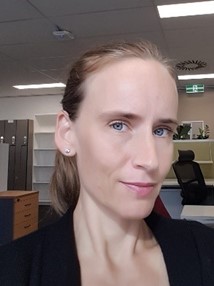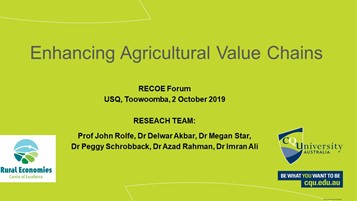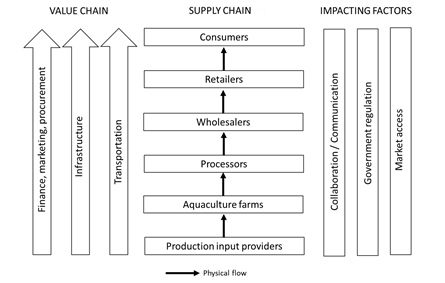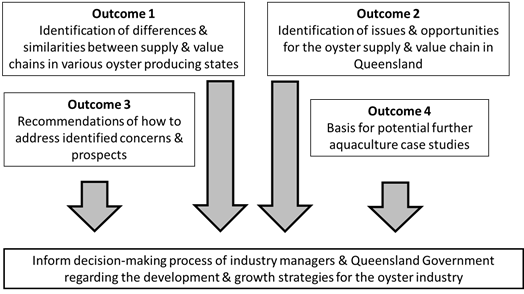Value Chains
- Economic Tools
-
Regional Innovation
- Ag Tech & Innovation
- Quilpie WellSpring: a circular economy concept for remote and arid regions
- Mutual ownership solutions for regional infrastructure innovation
- Creating a regional innovation ecosystem: the Goondiwindi case study
- Innovation PhD Project: Technology adoption in vegetable value chains
- Innovation PhD Project: Waste stream development in vegetable supply chains
- Farm Economic Diversification
- GTAG
-
Policy Development
- Policy development for regional Queensland
- QLD Rural & Regional workforce policy analysis
- Connectivity & inclusion in regional and rural communities
- Population policy for regional and rural Queensland
- Leveraging digital development in regional and rural Queensland: Policy Discussion Paper
- Social Dynamics in Rural Community
-
Value Chains
- Value Chain Analysis: three case studies
- Aquaculture supply & value chains
- Consumer Demand for Beef – Assessing credence factors for environment, health & animal welfare
- Evaluation of hybrid-cooperative model for horticulture: A case study of Tropical Pines
- Supply Chains of the Sheep and Goat Meat Industry
- Local Consumer Demands and Domestic Supply of Sheep and Goat Meat
- Translation & Engagement
- PhDs & Post Grads
- Future Drought Fund
Aquaculture supply & value chains
Lead researchers 
Dr Peggy Schrobback (pictured right) is a resource and environmental economist at the School of Business and Law at the Central Queensland University (CQU). She has expertise in the area of aquaculture and fisheries economics.
See Peggy's project presentation:

Enhancing Agricultural Value Chains_Peggy_Schrobback_RECOE_Forum_Toowoomba_Oct2019.pdf
Professor John Rolfe is Professor of Regional Economic Development at the School of Business and Law at the Central Queensland University (CQU). John is experienced in non-market valuation, regional development analysis, economic impact assessment in regional areas.
Background
The demand for seafood in Australia exceeds domestic supply and is increasing due to:
- population growth,
- rising household incomes, and
- heathier food choices by consumers.
The aquaculture industry has the potential to significantly expand to supply the domestic and export markets with farmed seafood.
The Queensland Government supports the future development & growth of the aquaculture industry. Yet, growth has been slow, potentially because complexities and barriers in the supply & value chains of seafood that is cultivated in Queensland (Figure 1).
Figure 1: Simplified aquaculture supply & value chain

Research need
Needed is:
- an improved understanding about the structure & processes within existing aquaculture supply & value chains, and
- an understanding about factors that affect the performance of the supply chains.
Case study: Edible oysters
The oyster industry in Queensland is characterised by:
- a relatively small production volume compared to oyster production in other Australian states,
- the Sydney rock oyster (Saccostrea glomerata) is the key species produced, mainly in Moreton Bay,very small volumes of black-lip oysters (Saccostrea echinare) and milky oysters (Saccostrea scyhophilla) are cultivated in tropical regions of Queensland.
Aim
The aim of this study is to investigate whether the supply & value chain for oysters produced in Queensland differs from the supply network of oysters in other states in Australia, and if so to identify possible reasons for that.
Method
Data will be collected using semi-structured interviews of oyster farmers in Queensland and other oyster producing states as well as other supply chains stakeholders (e.g., wholesalers, retailers).
Expected outcomes

Contact
Email: p.schrobback@cqu.edu.au
Phone: 07-3023 4277

